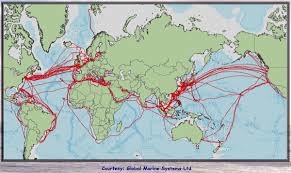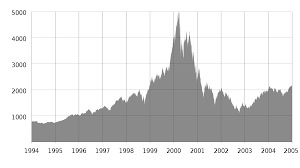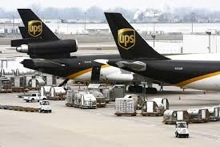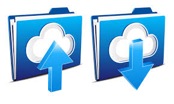
Thomas Friedman is both a three-time Pulitzer Prize winning journalist author of the widely respected books The Lexus and the Olive Tree, From Beirut to Jerusalem, and Longitudes and Latitudes. In 2005, he published The World is Flat, a bestselling whirlwind tour of wide-ranging effects of globalization. While the book is a good read and recommended, we will instead watch a lecture delivered by the author to an audience at the Massachusetts Institute of Technology (MIT). We will watch this video in class, but if you want to view it on your own click here. (http://mitworld.mit.edu/video/266) The lecture itself is an example taken from his book: its part of MIT's Open Courseware initiative. MIT has published a large number of free courses on the internet. They're not for credit, but the information is there, all for free.
During 2005, when Tom Friedman was introducing his new book The World is Flat, he made similar speeches to many different audiences. The notes on this page are based on a number of those speeches that I've viewed on the internet plus the content of the book itself (my copy is an original, and looks like the one pictured to the right). The notes are also augmented with pictures and related content to help you appreciate the tremendous changes that the world has undergone since the end of World War II. And the pace of change seems only to be quickening. Here's the big question: is today's frenetic commercial acceleration the greatest humanitarian achievement in history or does it threaten one or several of Earth's life support systems?
Friedman's readers would have to wait until his next book Hot, Flat, and Crowded
(2008) to read much about climate change and resource limitations. The World is Flat
does a very good job of explaining the unfolding of globalization and providing some background of the ten things that Friedman thinks were responsible for "flattening" the world.
Thomas Friedman

- journalist, author (1980s-present)
- Brandeis University, Mediterranean Studies
- Oxford University, Middle Eastern Studies
- New York Times Reporter (1980s-present?)
- New York Times Foreign Affairs Columnist (1995-present?)
- 3 times Pulitzer Prize winner
- bestselling author of several books, including the World is Flat (2005)
Lexus and Olive Tree Issues

The photos here are from a well-known 1992 Lexus television advertisement. We watched the ad in class—it touts Lexus' precision design and engineering, earned by its parent company, Toyota. The ad targeted upscale American consumers that might not have considered purchasing a Toyota, but, rather, a Cadillac, Buick, or European luxury car.

Palestinian demonstrators during the "First Intifada" in the late 1980s and early 1990s.
- As a columnist, subjects oscillated between "Lexus issues and olive tree issues"
- Lexus issues: globalization and trade and technology
- Olive tree issues: Middle East and more broadly, classical foreign affairs; culture and cultural differences
The 9/11 Wars
9/11, the terrorist attacks of September 1, 2001, shifted focus (Friedman and the rest of us) away from globalization and toward the " 9/11 wars".
Friedman really means the wars in Afghanistan (2001-present) and Iraq (2003-2011), but these wars are part of a much larger set of geopolitical conflicts in Southwest Asia. The list below is not intended to be a complete list of armed conflict in the Middle East, or Southwest Asia, but its a start toward seeing this perspective:
- Soviet Invasion of Afghanistan (1979)—rebels against the communist-leaning Afghan government were the Afghan Mujahideen, that, toward the late 1990's included Usama bin Laden and Ayman Al Zawahiri)
- Iran-Iraq War. (1980s)
- Operation Desert Shield (Gulf War I), 1990-1991 ("liberation" of Kuwait)
- First Intifada (1980s-early 1900s)
- Second Intifada (2000-2005)
- War in Afghanistan, 2001-present
- War in Iraq, 2003-2011
- ISIS (IS, ISL), 2014-present
Outsourcing: Friedman's "Wakeup Call"
Friedman's reorientation from the 9/11 wars, his "wakeup call" to globalization, was John Kerry's (running for president against George Bush in 2004) blast against Benedict Arnold executives who outsourced [jobs] from the United States...
Let's go see the "other side" of outsourcing:
Friedman interviewed Indian entrepreneurs who:
- wanted to do my taxes from Bangalore
- wanted to write my new software from Bangalore
- wanted to read my X-rays from Bangalore
- wanted to trace my lost luggage from Bangalore
Friedman had a growing awareness:
While I had been sleeping—covering the 9/11 wars) something really profound and fundamental had happened...
It all kind of came together the last morning of the last interview with Nandan Nilekani, the CEO of Infosys, the Microsoft of India. Nandan is an old friend. We were sitting on a couch outside his office. He said to me, Tom, I simply got to tell you, the playing field is being leveled and you Americans are not ready. I wrote that down in my notebook, the playing field is being leveled and got back in my jeep after my interview with my Indian driving barefoot and went back to our hotel along the potholed streets of Bangalore and I just kept rolling over in my mind the playing field is being leveled.
What is Nandan telling me? He's telling me the playing field is being flattened. My God. He is telling me the world is flat, and he's citing this as a great achievement in human progress.
Friedman asked for a leave of absence from the New York Times because he realized that the paradigm through which he was writing about the world (Lexus and Olive Tree) was out of date
While You Were Sleeping
The first chapter of the book is called, "While You Were Sleeping", it means that while Friedman (and the rest of us) were caught up in the 9/11 wars, the world was "globalizing":
Globalization defined: increasing interaction among the world's people due to improvements in communication and transportation
Here are some quotes from "While You Were Sleeping":
Tens of thousand of Chinese-speaking Japanese, running now the back rooms of not only major Japanese multinationals, but major American multinationals for their Japanese operation...Get your mind around that, thousands upon thousands of Japanese-speaking Chinese running the back rooms of GE, Microsoft, Toshiba, and Toyota.
But I kept going east until I got to Mexico. One of the things I started to do was ask people, tell me where you when you discovered the world was flat? So I asked some folks at the Central Bank of Mexico that question and they told me, it was a couple of years ago. As you know, the Patron Saint of Mexico is the Virgin of Guadalupe. About a year ago we discovered that statuettes of the Virgin of Guadalupe were being imported from China. When you're a low-wage manufacturing country and your patron saint is being imported from China, your world is flat.
I kept going east to Colorado where I called JetBlue to make a reservation. I knew what I was doing. I asked them if they flew from Denver to Atlanta, no. I got a very nice lady on the phone and asked her what her name was. Her name she said was Betty. I said, Betty, can I ask you a question? Where are you right now? She said, honey, I'm in my bedroom in my slippers, and I'm looking out at the most beautiful scene in Salt Lake City. As some of you may know, JetBlue, the most profitable airline in America today, has outsourced its entire reservation system to basically housewives in Salt Lake City, Utah. If you call JetBlue for a reservation, you will get Betty in her bedroom or her equivalent.
I kept going east right to McDonald's. As some of you may know, McDonald's also began a pilot project last year where you drive up to the drive-in window, ask to order three Big Macs, three milk shakes and 18 french fries for the kids, you are talking not to the person in that McDonald's, but to a call center in Colorado where your order is being taken, your picture is being taken, your order and picture are zapped to that McDonald's where when you drive up it'll all be ready. McDonald's discovered they could save 30 seconds on each order by doing it this way and drove down their error rate by a significant degree.
Globalization 1.0, 2.0, 3.0
We have been through 3 great years of globalization
- Globalization 1.0: 1492 until around 1800
- built around countries globalizing (domestic security, rule of law)
- Spain exploring the New World, Britain colonizing India, the Portuguese, East Asia
- "You went global through your country"
- Globalization 2.0:
- early 1800s right up to the year 2000 .
- the era was spearheaded by companies globalizing, companies globalizing for markets and labor
- "You went global through your company"
- Globalization 3.0: 2000 up to present ("while you were sleeping")
- the dynamic agent of globalization in this era is not countries and it's not companies, it's individuals and small groups
The Flatteners
1: Collapse of the Berlin Wall (1989) & release of Windows 3.0 operating system (1990)—"When the walls came down, and the windows came up":


- end of the Cold War
- one-third of the world's population joined the world economy at once, during "plug-n-play" era
Windows popularized the "graphic user interface" (GUI), which brought point-and-click accessibility, while also allowing multi-tasking (running more than one application at once and switching freely among them).
Netscape brought this same accessibility and flexibility to the world-wide-web.
2: Netscape (1995)—Netscape did three things:

- GUI (graphic user interface)—point and click means anyone can use the internet ("accessibility")
The Internet had been around, but of course Netscape thanks to Mark Andreessen gave us the Internet browser. It gave us the tool that brought the Internet alive for grandpa and grandma, for grandson and grandchild...Netscape really brought the Internet alive.
- standardization: http, html, url, jpg, png, and all of the other "alphabet soup" of communications protocols were standardized when Netscape made the internet accessible and more widely used
- Netscape went public at the price of $28, was bid up to $71, and closed at $56—global financial markets "realized" that the internet could (would) be commercially profitable
- spurred the investment in trans-ocean and trans-continental fiber-optic cable
- the "accidental over-investment" of $1 trillion in fiber optic cable in 5 years
- 99% of all communications runs over the fiber-optic cable network (satellites are used for broadcasting)
- fiber optic cable made Bangalore, Beijing and Bethesda (Friedman lives in Bethesda, Maryland) virtual neighbors
- drove down the cost of transmitting words, music and data to basically zero


Of course, we've seen bubbles before, bubbles in railroads. That was what really drove the massive overinvestment in the laying of the railroads in this country in the middle of the 19th century. But there was one big difference with this overinvestment. When we overinvested in railroads we got to ride. When we overinvested in fiber optic cable, India and China got to ride for free. India is the one country in the world that managed to benefit from the dot-com boom and the dot-com bust, which I'll talk about a little bit later.
3: Workflow software
- early software (1980s-early 1990s)could not share files—akin to the Blackberry Messenger, iMessage, and Android SMS incompatibility a few years ago
- "suites" of software could share data more easily (Windows ushered in the need for this because having multiple programs open at once was a new thing)
What the work flow revolution did was bring application to application connectivity together like never before. When you put the two together with the fall of the Berlin Wall what you got willy-nilly was a global platform for the sharing of work and knowledge that allowed more people to collaborate on more different kinds of things in more different kinds of ways on more different kinds of days from more different places than ever before in the history of the world.
4: Open-sourcing/Uploading


- communities of users cooperating on projects like Linux and Firefox
- blogs, forums, Wikipedia
- "a bunch of geeks sitting at home writing the next operating system called Linux working in chatrooms for free"
- Firefox
- a brand new Web browser (2005)
- in the first month, Firefox was downloaded 10 million times and now is 5 percent of the global browser market after a month.
- designed by a 19-year-old at Stanford collaborating with a 24-year-old in New Zealand—I do not believe they have ever met
- Apache web server (the programs that fetch internet files for you)—the World Wide Web runs on Apache, an open-source project from the University of Illinois
- a whole new industrial model of creation
5: Outsourcing

- allows companies to split functions into core and support—support services can be subcontracted and performed in the most efficient, cost-effective way—by having someone else do it for them (domestically)
6: Offshoring

- China joined the World Trade Organization in 2001—the agreement provided legal protections for foreign investors (property, intellectual property)
7: Supply-chaining

- what Wal-Mart does
- when something is sold, its replacement is ordered
- data mining reveals patterns that can predict consumer demand
8: Insourcing
This is what UPS is doing (the people in the funny brown shorts): they go into your business and take care of the thing that they're experts at—logistics:


- Toshiba: laptop repair at the Louisville, KY, UPS hub
- Nike order processing, fulfillment, and billing—all handled by UPS, not NIke
- Papa John's: ingredients delivery from manufacturer (Papa John's does not make its ingredients) to franchises is done by UPS driving Papa-labeled trucks
9: Informing—search engines and free online content

- Wikipedia
10: "The Steroids"—makes all the other flatteners even more dynamic


- wireless
- voice over Internet (VoIP)—Skype, Magic Jack
- file sharing
Other Important Concepts, Ideas, Institutions
- Creative destruction: the process by which innovations that are more efficient, better, displace older, less efficient ways of doing things—the problem arises when the rate of change is faster than people can foresee and fall behind in terms of marketable job skills
- World Bank and International Monetary Fund (IMF)
- Outsiders: there are people who are simply outside the flat world; too sick (HIV/AIDS, malaria, tuberculosis); unconnected (rural India and rural China particularly)
- today (2015) approximately 95% of India is electrified—but the 5% without is 50 million people!
- this is what the end of the electrical grid looks like in India: its hard to see, but the thin small poles on the bottom-right do not yet have wires on them—the farmers in this very small village will have electricity for the very first time at their homes this summer (2015)
- soon it will be 96%, 97%...
The bad news is that nobody has told the kids. Nobody has told the kids.

